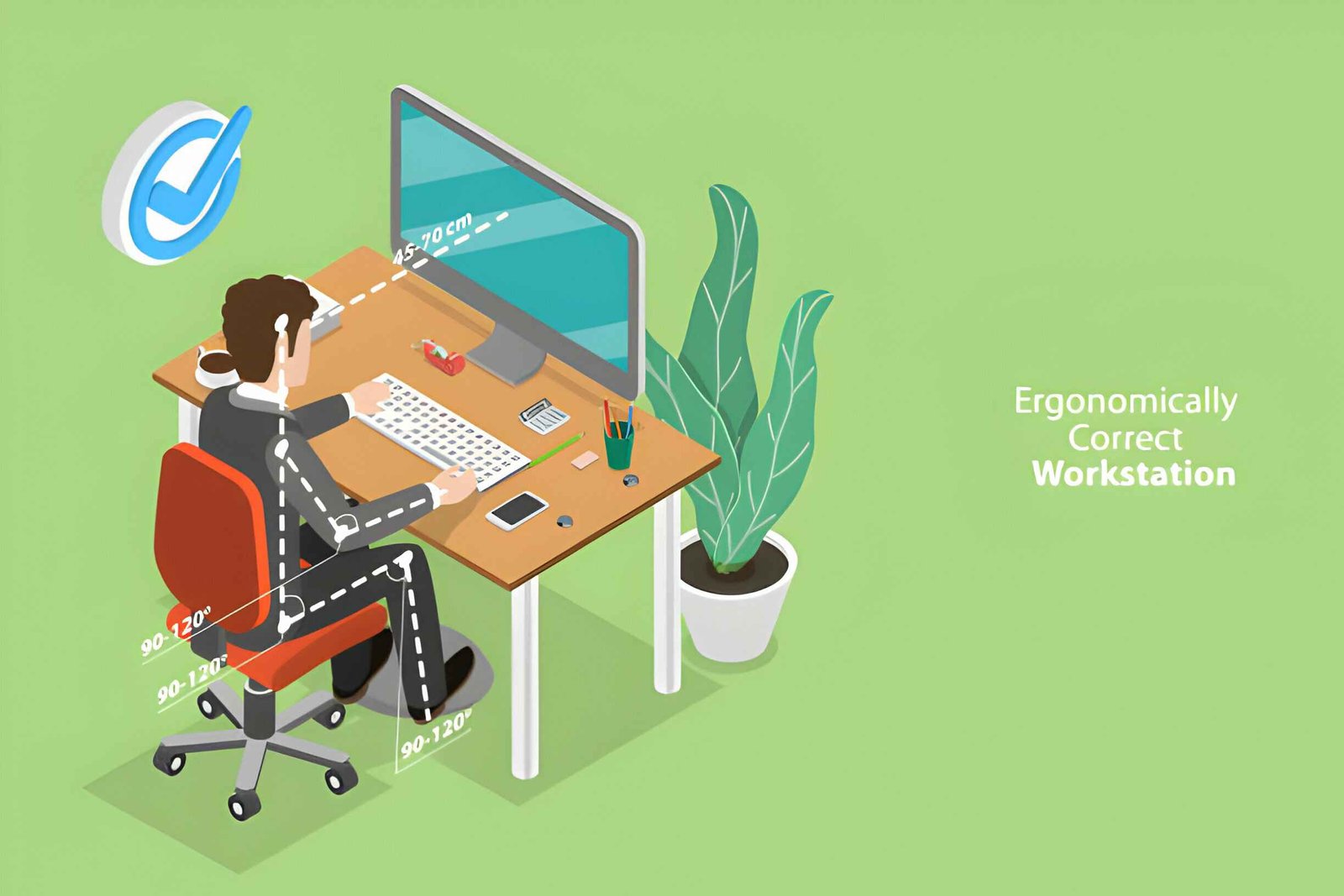In the fast-paced digital era we live in & technology has become an integral part’s our daily lives. Whether for work & education & or entertainment & we find ourselves surrounded by various devices & from smartphones to laptops. However & the increasing reliance on technology has raised concerns about its impact on our physical & mental well-being. To address these concerns & ergonomic guidelines have been developed to ensure healthy technology use. In this comprehensive exploration, we will delve into the world’s ergonomic guidelines & focus on which practices are essential for maintaining an balance between technology use & well-being.
Understanding Ergonomics:
Ergonomics & derived from the Greek words “ergon” & “nomos” & is the study’s designing & arranging products, systems, or environments to fit the people who use them. Applied to technology use, ergonomic guidelines aim to optimize the interaction between users and their devices, minimizing the risk of discomfort, injury, or long-term health issues.
Key Ergonomic Guidelines for Technology Use:
Maintaining Proper Posture:
One fundamental ergonomic guideline is the maintenance’s an proper posture while using technology. Whether sitting at an desk or lounging on the couch with an tablet & it’s crucial to keep the spine aligned & the body well-supported. Ergonomic chairs & adjustable desks & monitor stands can contribute to maintaining an healthy posture & reducing the risk’s musculoskeletal problems.
Regular Breaks and Movement:
Prolonged use’s technology without breaks can lead to stiffness & discomfort. Ergonomic guidelines advocate for taking regular breaks to stretch, move & change positions. This not only helps prevent physical strain but also improves focus & productivity. Simple exercises & stretches can be incorporated into the daily routine to counteract the sedentary nature’s technology use.
Eye Care and Screen Positioning:
Eye strain is an common issue associated with prolonged screen time. To mitigate this & ergonomic guidelines emphasize proper screen positioning & regular eye breaks. The top’s the screen should be at or slightly below eye level & the screen should be at an comfortable distance to reduce eye strain. Additionally & following the 20-20-20 rule looking at something 20 feet away for 20 seconds every 20 minutes can alleviate eye fatigue.
Keyboard and Mouse Placement:
The design & placement’s keyboards & mice play an crucial role in preventing repetitive strain injuries. Ergonomic keyboards & mice are designed to reduce stress on the hands & wrists. Proper positioning’s these input devices can help maintain an natural wrist alignment & preventing conditions like carpal tunnel syndrome.For more information about this journey visit dada legal.
Optimizing Workspace:
The arrangement of the workspace significantly impacts comfort and efficiency. Ergonomic guidelines recommend organizing the desk space to minimize unnecessary reaching & ensure frequently used items are within easy reach. Clutter-free environments contribute to a focused & stress-free work or study atmosphere.
Appropriate Device Usage:
Each device has its own set’s ergonomic considerations. For example, when using an laptop, it’s advisable to use an external keyboard & mouse to avoid awkward postures. Tablets & smart phones should be held at eye level to reduce strain on the neck & shoulders. Adhering to device-specific ergonomic recommendations ensures an more user-friendly experience.
Mindful Technology Use:
Beyond physical considerations & ergonomic guidelines also address mental well-being. Mindful technology use involves being adware’s one of screen time & setting realistic limits & taking breaks to prevent digital fatigue. Balancing work, leisure & social interactions in the digital realm is essential for overall well-being.
Customization for Individual Needs:
Everyone is unique & so are their ergonomic needs. Guidelines provide an foundation & but individuals are encouraged to customize their workstations based on personal preferences and comfort. Adjustable furniture & ergonomic accessories & personalized settings on devices allow users to tailor their environments to meet their specific requirements.
Conclusion:
In conclusion & incorporating ergonomic guidelines into our daily technology use is crucial for maintaining an healthy & sustainable digital lifestyle. By prioritizing proper posture & taking regular breaks & optimizing our workspace & being midfall’s our technology habits & we can strike an balance that promotes both physical and mental well-being. As technology continues to evolve & it is imperative that we remain vigilant about adopting ergonomic practices to ensure an harmonious coexistence with the digital tools that have become an inseparable part’s our lives.





